Agra Red Fort
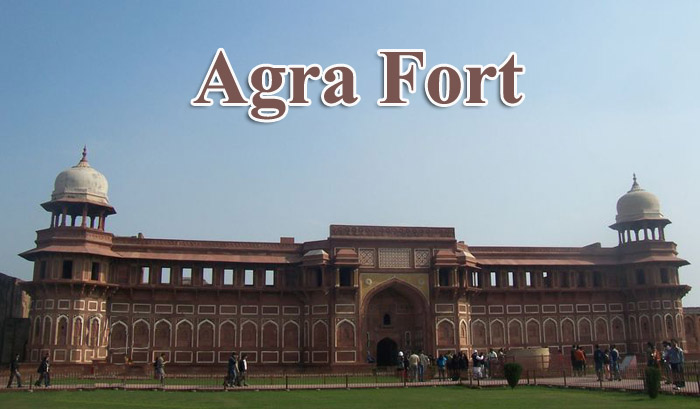
Agra Red Fort is the second world heritage site of Agra after the Taj Mahal. It is located only 2.5 km away from the Taj Mahal. It is also called the Red Fort of Agra and is described as a majestic walled city. It was built in 1565 by the Mughal emperor Akbar. Interestingly, there is a plank at the entrance of the fort, which reads “This fort was originally built before 1000 AD and Akbar just renovated it.” This fort has also been included in the UNESCO World Heritage Site.

Agra Fort is one of the most important forts in India. The Mughal emperors of India, Babur, Humayun, Akbar, Jahangir, Shahjahan, and Aurangzeb lived here and ruled entire India from here as it was important place of the Mughal Empire. Foreign ambassadors, travelers, and high-ranking people used to come here.
The shape of the fort is a semicircle and is enclosed by massive double battlemented walls made of red sandstone, which is parallel to the Yamuna River and some circular or triangular from the other side. There is a road on all three sides of the fort, which is connected on all sides. The road leading to the Yamuna is called Yamuna Kinara Marg, which leads to the western door of the Taj Mahal.
A road leading to Agra Fort Railway Station, the powerhouse intersection, and then the main entrance door of the Red Fort leading to the Ramlila Maidan. Going beyond that, this path is found by going along the path of Yamuna. The walls around the fort are about seventy feet high and sometimes several meters wide.
The walls of the fort are made of extremely strong sandstone of red color and several meters and wide moat were built around the fort with a security view. There are four gates at the four corners of the fort, out of which the main gate is Delhi Gate which is the grandest of the four. Inside this gate is also another gate, called Elephant Pole, on either side of which there are two real stone elephant statues. Presently, this gate is behind Ambedkar Park near the busiest intersection of the city and is closed for entry.
The second is the Akbar Darwaza, also known as the Amar Singh Gate, which is similar to the Delhi Darwaza in architecture, which is built after crossing the moat of the fort. This door currently stands near Ramlila Maidan from where tourists and visitors are allowed to enter the fort.
Suggested Read: Taj Mahal in Agra
History of Agra Fort
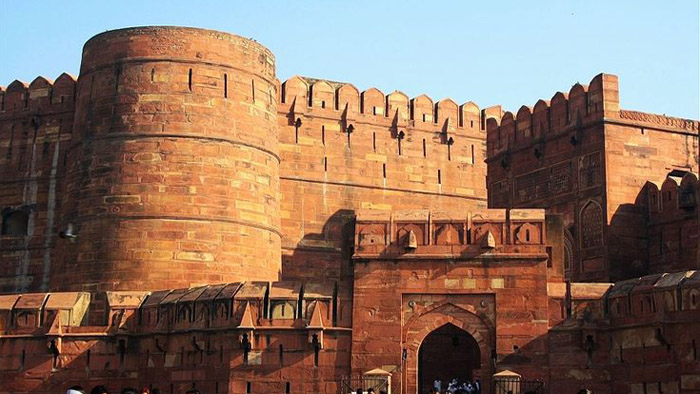
In the early times, it was originally a brick fort, which belonged to the Rajputs of the Chauhan dynasty. Its first description comes in 1080 AD when Mahmud Ghaznavi’s army captured it. Sikandar Lodhi (1487–1517), the first Sultan of Delhi Sultanate, traveled to Agra and got the fort repaired in 1504 AD and lived in this fort and made it the capital in 1506 AD. He ruled the country from here. He also died in this fort in 1517. After which his son Ibrahim Lodi took the throne for nine years. That is until he was settled in the First War of Panipat (1526). In his era, he built many places, mosques, and wells here.
After Panipat, the Mughals also occupied this fort, as well as its immense wealth. There was also a diamond in this property, which later became known as Kohinoor diamond. Then Babur came to Ibrahim’s place in this fort. He built a baoli here. In the year 1530, this was also the reign of Humayun. Humayun was defeated by Sher Shah Suri in Bilgram this year, and the fort was captured. The fort was occupied by the Afghans, who were eventually defeated by the Mughals in 1556 in the Second War of Panipat.
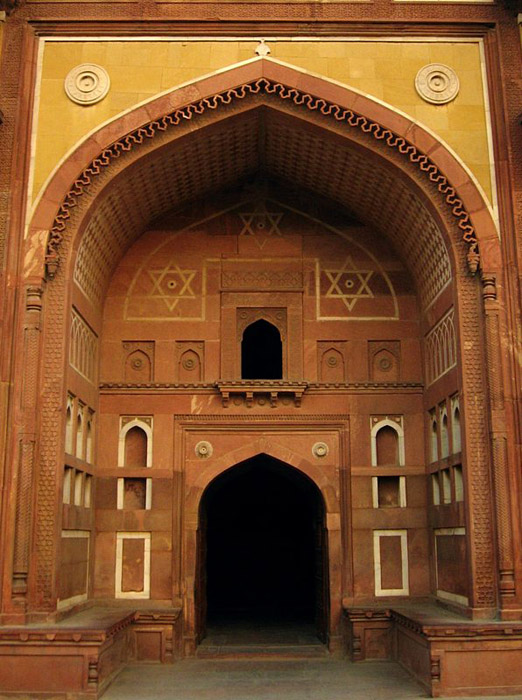
Later, when Akbar recognized the importance of Agra, he declared Agra as the capital of his empire in 1558. It is said that around 4000 workers built this fort by working daily in about 8 years and its construction work was completed in 1573. Akbar also built a palace for his beloved queen Jodha Bai here. After this, Shah Jahan further upgraded it. He made it even more spectacular with marble and beautiful carvings.
In the last days of his life, Shah Jahan was imprisoned by his son Aurangzeb in this fort. A punishment that, given the luxury of the palaces of the fort, was not as stringent. It is also said that Shah Jahan died while watching the Taj Mahal in the Musaman Burj of the fort. The junction of this tower has a very beautiful view of the Taj Mahal.
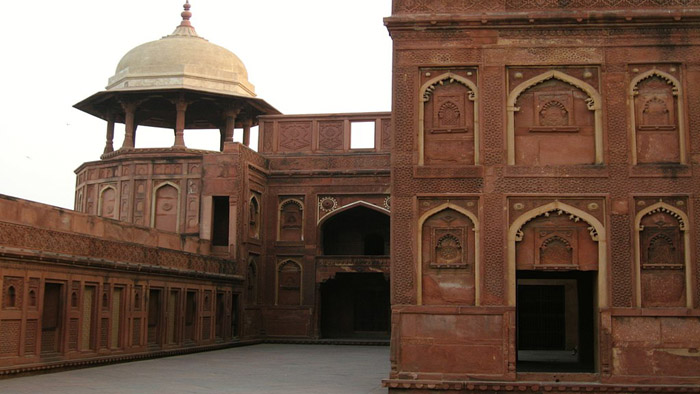
Later the Maratha Empire acquired this fort. Later this fort continuously went from the Marathas to their enemies. But Maratha was defeated by Ahmed Shah Abdali in 1761 in the Third Battle of Panipat. After this, Maratha people were outside this region for almost 1 decade. And finally, the fort was conquered by Mahadji Shinde in 1857.
Suggested Read: Taj Mahal is a Hindu Temple
Agra Fort Architecture
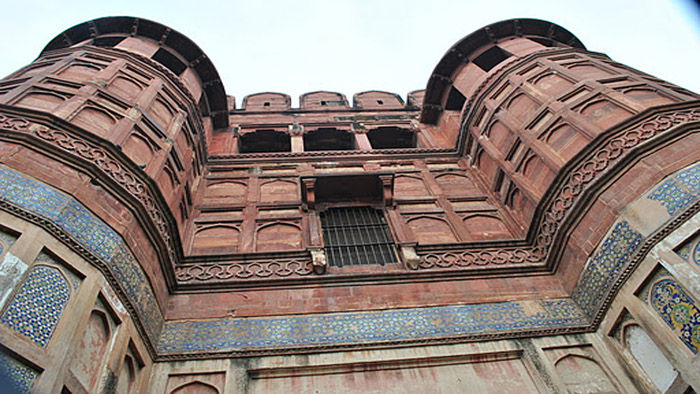
Many Hindu and Islamic architecture mixes are seen here. In fact, many Islamic ornaments also contain haram (forbidden) patterns, such as Azadeh, elephants, and birds, wherein Islamic decorations, geometric patterns, inscriptions, rectangles, etc., are usually seen in the decoration of the panels.
Agra Fort is sometimes called the Red Fort. Not only the red color but also the architectural style and design of the Red Fort in Delhi is quite similar. Both the forts have been constructed with red sandstone. This is the reason that when tourists see the fort of Agra, they remember the Red Fort of Delhi.

10 Major structures of Agra fort
1. Sheesh Mahal
Literally ‘glass palace’ means the decoration of small mirrors on the walls, that is, it was room to change the royal robes fitted with royal small inlay mirrors.
2. Diwan-e-Aam

The Peacock Throne or Takht-e-Taus was installed in it, it was used to talk to the general public and listen to their complaint.
3. Diwan-e-Khas
It was used for the seminar and consultation of its high officials, Jahangir’s throne was its specialty.
4. Anguri Bagh
85 square meters, geometrically managed garden
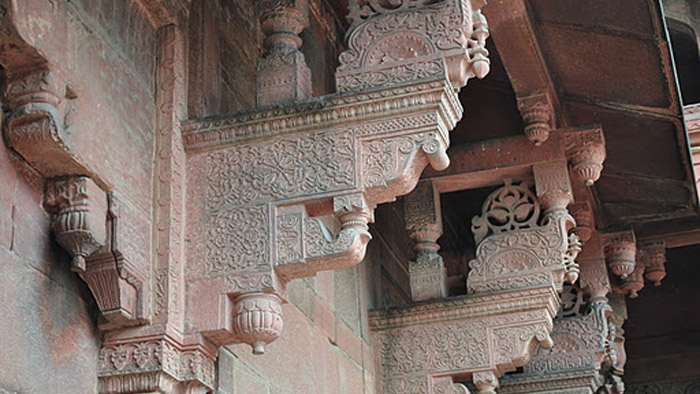
5. Khas Mahal
This white marble palace is a classic example of marble painting.
6. Meena Masjid
It literally means ‘heavenly mosque’. This is a small mosque closed to the public
7. Nagina Masjid
This was also a mosque built for women in the court, inside which was the Zenana Meena Bazaar, in which only women goods were sold.
8. Musamman Burj
There is a large octagonal tower, with a balcony from which the Taj Mahal is clearly visible.
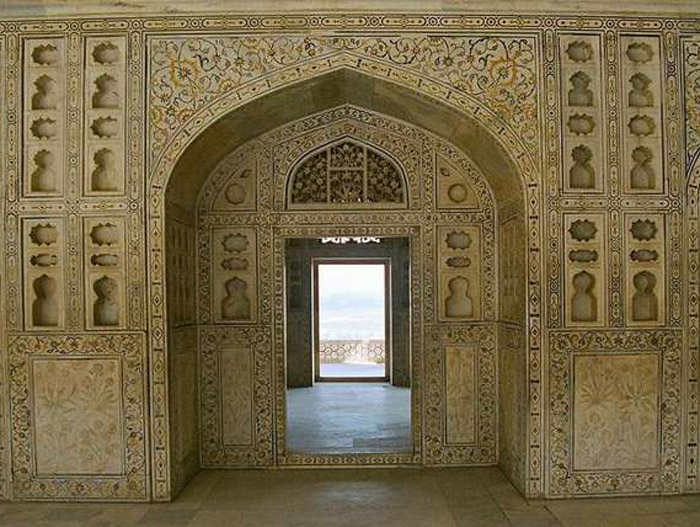
9. Ghazni Gate
A gate that originally belonged to the Tomb of Muhmud of Ghazni.
10. Babur’s Baoli, a Baoli
This was the first modification made to the fort by Babur.
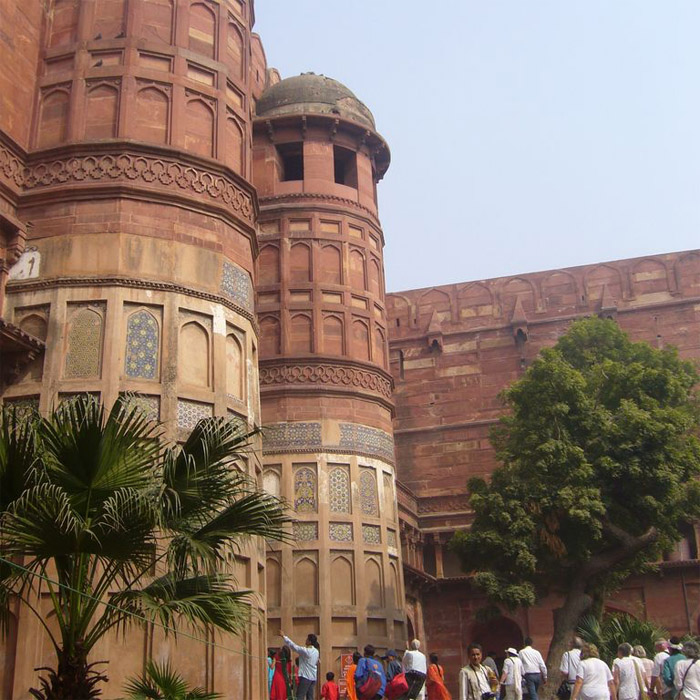
Suggested Read: Taj Mahotsav Festival
Today Agra Fort is one of the best forts in India visited by the number of tourists after the Taj Mahal. Shah Jahan decided to build Red Fort in Delhi taking inspiration from the Agra Fort. The Sadar Bazaar, one of the top shopping places in Agra, is located near the fort. The importance of Agra Fort is often overshadowed by the Taj Mahal, but this one-time residence of the Mughals has a charm of its own. This fort is surrounded by beautiful gardens, courtyards, and massive walls with riverside views. A glorious monument with astounding architecture and story.
